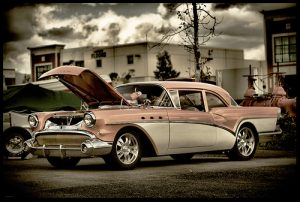A Touchy Topic—The Pitfalls Of Used Vehicle Packs
As regular readers know, I’ve long argued that packs on used vehicles are problematic for dealers in today’s marketplace.
First, packs burden every car with  additional cost. Velocity dealers know full well how challenging it can be to acquire and recondition vehicles in a manner that allows sufficient margin for a respectable front-end gross profit. The additional cost of a pack (which I’ve described as a “tax” in the past) makes this delicate balancing act even more problematic.
additional cost. Velocity dealers know full well how challenging it can be to acquire and recondition vehicles in a manner that allows sufficient margin for a respectable front-end gross profit. The additional cost of a pack (which I’ve described as a “tax” in the past) makes this delicate balancing act even more problematic.
Second, packs trigger pricing pipe dreams and aged units. It’s not uncommon for dealers who pack used vehicles to price them above the market to make up the pack-inflated costs of a car and achieve their front-end gross profit objectives. Unfortunately, today’s market rarely allows dealers to have it both ways. These dealers often end up reducing prices and front-end gross profits to clear out aged units. In essence, the market says “Sorry, Charlie” to their used cars and diminishes the dealer’s ability to maximize volume and profitability.
Third, packs create a chilling effect on acquisitions. Appraisers and buyers at pack-focused dealerships have a difficult task: They must either under-allow on trades or get extremely lucky at auctions to buy cars at a cost that allows room for the pack and reconditioning, as well as the dealer’s front-end gross profit objective. The dynamic often translates to under-allowing on trades and passing up auction cars. Why? It’s an easier out than facing the wrath of a dealer who’s unhappy that front-end gross profits aren’t where they should be.
Now, as much as I believe packs are a relic of the past, I recognize that dealers are often reluctant to completely eliminate them. For these dealers, I would offer two suggestions:
- Limit packs to $600 or less. Over the past few years, I’ve seen velocity dealers trim pack amounts to strike a better balance between used vehicle volume, inventory turns and profitability. The current packs run from $150 to $600, depending on the dealership’s efficiency and skill as a used vehicle retailer, and the level of competition in its local market. I’ve also found there’s an inverse relationship between the size of the pack and the dealership’s sales volumes and overall profitability—the lower the pack, the higher the performance.
- Use packs to help your team. I recently spoke with a Midwest Ford dealer who’s cut his pack from $1,000 to $600 as he’s more than doubled his monthly used vehicle sales from 60 to 125 units. I like how he uses the pack to advance his velocity-driven goals:
“You have to have your cars in the market to sell them. If the pack is stopping cars from being in the market and making gross, we need to back off,” the dealer says. “The only thing I use the pack for now is to help when my team makes a mistake. If they’ve got an old car and lose money, I’ll bruise it so they don’t show a loss. It helps them mentally be able to go ahead and sell a car, lose money and move on. They don’t have an aversion to the pack anymore because they know I’ll use it if they need it. It keeps everybody’s head in the game.”
